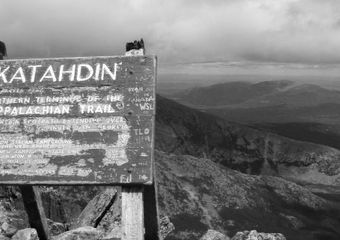Mailbag with Jennifer Pharr Davis: Dealing With Post-Trail Depression
The Trek Editor’s Note
Welcome to our fifth Mailbag with Jennifer Pharr Davis. In case you missed it, we’re taking hikers’ questions and passing them off to the trail legend for her wisdom and analysis.
JPD has solo thru-hiked the AT and PCT, set the self-supported FKT on the Long Trail, and the supported FKT on the Appalachian Trail. Her AT FKT landed her the honor as one of National Geographic’s Adventurers of the Year. But the real reason we love JPD and ask for her input? For such an accomplished hiker, she is down-to-earth and incredibly humble. She has figured out how to have a life off-trail as a wife, mother, and professional… and continue hiking. She has kept it classy amid the negativity and tense confrontations that can be part of the hiker trash community, and she has always found ways to give back to the trail and conservation organizations.
We have big news this week! JPD’s newest book, The Pursuit of Endurance is available to purchase today. Read our review here, and check out this inspirational book for yourself. Let us know if you read it—we’d love to hear what you think.
Have a question for an upcoming Mailbag? Email [email protected] and we’ll pass it on.
Question
I’d love to know how you cope with the physical, mental, and emotional aftermath of the multi-month adrenaline high that is thru-hiking. Any thoughts on dealing with the come down and the post-trail depression that affects so many of us? -Tim Liedtke
At most of my recent speaking engagements, there has been at least one individual in the audience who nods his or her head knowingly along with my stories, laughs before the punch lines, and cringes with empathy as I discuss the shin splints and sleet storms that are part and parcel with thru-hiking. Then, at the end of the presentation, that same individual raises his or her hand and asks, “But what do you do when it’s over? How do you cope?”
As difficult as thru-hiking can be, it is far more challenging to readjust back to the life you lead before the trail.
After spending five months in the woods after hiking over 2,000 miles, you will be different. Yet, everything else will seem the same. And, it’s hard—if not impossible—to fit back into the same puzzle when you are no longer the same shape.
This predicament can produce loneliness, confusion, and depression. The first step in working your way through these feelings is accepting them as legitimate emotions. You will probably be elated to take hot showers and eat burritos stuffed with melted cheese and cool guacamole but that doesn’t mean that you need to be happy all the time. Leaving the trail and entering back into mainstream culture is a difficult transition, and for most people it is abrupt and it can lead to discontentment.
After hiking 20 miles per day, a cubicle can feel like a prison. After focusing on nothing but walking, the multitasking of various projects can feel overwhelming. After spending all day outside, the process of going from your home to your car to the office feels unnatural.
As a recent thru-hiker trying to readapt to society, you are not just struggling with a new identity you are also questioning mainstream culture.
The first step in overcoming or working through this season is to embrace the new you. It’s okay (and expected) that you will be a different person than the man or woman who started the trail. If you want other people to like and accept the new you, then you should start by liking and accepting yourself. Your values, worldview, and life plan may look completely different after a thru-hike. While the transformation you experienced on the trail can make acclimating to life off trail more challenging, I don’t know of any hiker who would willingly revert back to the person they were before his or her thru-hike.
Once you’ve accepted that you have changed (for the better), there can be tension due to the fact that society looks very much the same, and the figurative path you were on before hiking a literal trail may no longer seem appealing. The trail is a little bit like a Pandora’s Box of new ideas and realities, and you won’t be able to repress or ignore the truths and realizations that have escaped. Your best bet is to learn to navigate a different course. The good news is that thru-hiking often reveals alternate life choices that are sustainable, even if they are not socially acceptable. It is okay to choose a lifestyle other than the mainstream. Some of the most content people I know are not the ones with white picket fences and two weeks of vacation per year, but the ones who find affordable ways to travel and hike… the ones who are able to live out their passions and pursue their interests.
If the transition off trail truly feels overwhelming, don’t hesitate to talk to trusted friend, spiritual advisor, or a trained therapist. The conflicts facing a thru-hiker after a long journey can often be severe or lingering and it might require a strong community of support and professional guidance to learn how to keep moving forward once a hike has ended.
Finally, when you reach that last trail marker, be it is a worn brown sign, bronze plaque, or international border, DON’T say goodbye to the trail. The transition back into society isn’t as demoralizing when you know that you can go back to the trail. You may not always be able to spend months hiking, but you can find ways to spend hours and days in the woods. It doesn’t have to be one or the other. You can move forward with a foot in both worlds.
Related
This website contains affiliate links, which means The Trek may receive a percentage of any product or service you purchase using the links in the articles or advertisements. The buyer pays the same price as they would otherwise, and your purchase helps to support The Trek's ongoing goal to serve you quality backpacking advice and information. Thanks for your support!
To learn more, please visit the About This Site page.






